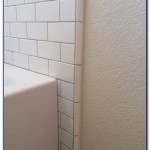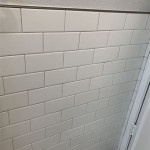Can You Float A Floor Over Tile?
If you're considering updating your flooring, you may be wondering if you can float a floor over tile. Floating floors are a great option for many reasons. They're easy to install, relatively inexpensive, and can be installed over a variety of subfloors, including tile. However, there are a few things to keep in mind before you start floating a floor over tile.
First, you'll need to make sure that the tile is in good condition. If the tile is cracked or damaged, it will need to be repaired before you can float a floor over it. You'll also need to make sure that the tile is level. If the tile is not level, the floating floor will not be level either.
Once you've made sure that the tile is in good condition and level, you can start floating the floor. Floating floors are installed by clicking the planks together. The planks do not need to be nailed or glued to the subfloor.
When floating a floor over tile, it's important to use an underlayment. Underlayment helps to protect the floating floor from moisture and damage. It also helps to reduce noise and vibration.
Floating floors are a great option for many reasons. They're easy to install, relatively inexpensive, and can be installed over a variety of subfloors, including tile. However, it's important to make sure that the tile is in good condition and level before you start floating a floor over it.
Benefits of Floating a Floor Over Tile
There are many benefits to floating a floor over tile. Some of the benefits include:
- Easy to install: Floating floors are easy to install. The planks simply click together. No nails or glue are required.
- Relatively inexpensive: Floating floors are relatively inexpensive. They're a great option for those on a budget.
- Can be installed over a variety of subfloors: Floating floors can be installed over a variety of subfloors, including tile.
- Durable: Floating floors are durable. They're resistant to scratches and dents.
- Easy to clean: Floating floors are easy to clean. They can be swept, mopped, or vacuumed.
Things to Consider Before Floating a Floor Over Tile
Before you float a floor over tile, there are a few things to consider. Some of the things to consider include:
- The condition of the tile: The tile must be in good condition. If the tile is cracked or damaged, it will need to be repaired before you can float a floor over it.
- The levelness of the tile: The tile must be level. If the tile is not level, the floating floor will not be level either.
- The type of floating floor: There are many different types of floating floors available. You'll need to choose a floating floor that is compatible with your tile.
- The underlayment: You'll need to use an underlayment when floating a floor over tile. Underlayment helps to protect the floating floor from moisture and damage.
Installation Instructions
To float a floor over tile, follow these instructions:
- Make sure that the tile is in good condition and level.
- Install an underlayment.
- Start floating the floor in a corner of the room.
- Click the planks together. Do not nail or glue the planks to the subfloor.
- Continue floating the floor until you reach the other side of the room.
- Trim the last plank to fit.
- Install baseboards and moldings.
Conclusion
Floating a floor over tile is a great way to update your flooring. Floating floors are easy to install, relatively inexpensive, and can be installed over a variety of subfloors. However, it's important to make sure that the tile is in good condition and level before you start floating a floor over it.

What Is A Floating Floor

How To Install Floating Vinyl Flooring Over Old Floors Simply2moms

What Is A Floating Floor

How To Install A Floating Tile Floor

Can You Put Floating Carpet Tiles Over Tile Or Concrete Ideas

Advantages Disadvantages Of Floating Floors Floorings

Best Of 2024 1 Concrete Countertop Experts

Advantages Of A Cork Floating Floor Over Glue Down Tiles Cancork

What Is A Grout Float And How Do You Use It Rubi Blog Usa

New Vinyl Plank Flooring Over Tile Table And Hearth
Related Posts








